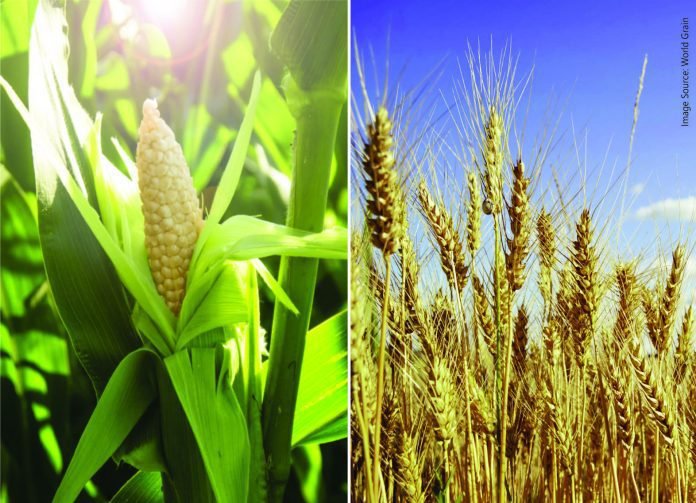With corn (maize) prices ruling higher than wheat for the first time in a decade, demand for the latter has increased in the domestic and export markets, according to trade and industry experts.
India has begun exporting wheat for feed to countries such as Indonesia, while enquiries are coming in from Vietnam. This will help India maintain wheat exports at last fiscal’s level of two million tonnes (mt)
Wheat for poultry feed
In India, corn is delivered at Rs 22,000 a tonne at Namakkal, the poultry industry hub, and wheat costs Rs 19,500, said Vangili Subramanian, President, Tamil Nadu Egg Poultry Farmers Marketing Society (PFMS).
At the same time, the poultry industry in Tamil Nadu is looking to buy corn from Uttar Pradesh and Bihar at Rs 20,000 a tonne farm delivered. Subramanian said wheat would have to be cheaper by at least Rs 2,000 than corn for the poultry sector. “Corn provides more energy to the birds than wheat. The latter provides more protein,” he said.
“The domestic feed industry is buying wheat as it costs less than corn. Even average quality corn costs Rs 19,000 a tonne. Therefore, the feed sector is looking to buy wheat under the open market sale scheme (OMSS) at a lower price,” said Khalid Hussain Khan, Head – Commodities and Supply Chain, ITC Ltd – Agri-Business Division.
‘One nation, one market’
Khan was addressing the business session of the three-day ninth International Wheat Seminar held virtually on “Wheat market and price”.
Under OMSS, the Food Corporation of India (FCI) is offering wheat, whose specifications are relaxed, to industrial users and flour mills at Rs 18,000 a tonne for the 2019-20 crop. Wheat from the 2020-21 crop is offered at Rs 20,000 a tonne, while fair average quality of the grain stored from previous years is offered at Rs 21,000. Wheat from this year’s crop is offered at Rs 21,500 a tonne.
“Indian wheat will be competitive for exports to Bangladesh. It can also go to Indonesia and Malaysia, where a lot will be bought for feed,” said Khan. The high rates in the global freight market matter and it will help India.
Currently, Indian wheat is quoted at $260-265 (Rs 19,450-19,800) a tonne free-on-board (FOB) compared with Black Sea-origin wheat offered at $240 (Rs 17,950).
Record production
Akshay Yadav, Trading Manager – Grains, Louis Dreyfus Company India Pvt Ltd, told that India could easily export 1.2 MT of wheat to Bangladesh and Nepal.
“India has had a back-to-back record wheat production. Since the monsoon has been erratic this year, any spike in the price of corn will see demand switching to wheat,” he said.
This year, India is estimated to have produced a record 108.75 MT of wheat compared with 107.86 MT last year. Corn production is also a record 30.24 MT against 28.77 MT a year ago.
Imports costlier
The domestic milling industry, too, will be looking to procure more wheat from the domestic market as the landed price of the foodgrain even at zero customs duty would be Rs 26,000 a tonne. “At the current duty level of 40 per cent, wheat imports will be around Rs 35,000,” he said, adding that wheat from Uttar Pradesh and Bihar could find their way into Bangladesh.
While 1.8 MT of wheat stocks would go towards suppl under the Prime Minister Garib Kalyan Yojana (PMGKY) as Covid-19 relief every month for seven months, OMSS sale could be 5-7 MT. “Comfortably, OMSS sale will be six mt,” he said, adding that it will result in 26.77 MT wheat carryover stocks by April 1 next year.
“The Government has a strategy in place with another high procurement and it will also get the inventories cut,” Khan said.
Favourable weather
Corn and wheat prices in the global market have, in fact, dropped by nearly seven per cent in the past month. This is on the back of favourable weather outlook in the US.
Corn acreage is estimated to increase by two per cent, while area under wheat could increase five per cent from last year. However, China, which had driven up commodity prices by buying huge quantities of wheat, corn and soyabean from the global market, is likely to import 20 MT of corn, six mt lower than last year.
Also, wheat continues to be used as substitute for feed in China, the US Department of Agriculture said.
Source: businessline









